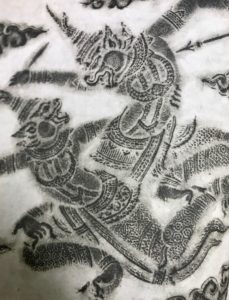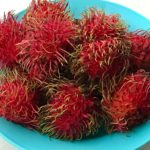To my initial sorrow as a sweet-tooth, I found that in the East, dessert is a minor affair and sometimes is even completely passed over. Traditionally, sweet items are lesser players in the world of Chinese eats. Northern China in particular is known more for its preparation of meats and noodles rather than desserts but Beijing has more to its culinary name than roast duck. To my intense joy, halfway through the program, I discovered the Daoxiangcun (稻香村) company, which roughly translates to “village of rice fragrance”, one of Beijing’s oldest and most famous pastry companies. Daoxiangcun pastries are unique to Beijing; there is a different Suzhou Daoxiangcun company, but these pastries apparently cannot be found in Hong Kong, and even in Taiwan, people are not as familiar with them as in Beijing. Daoxiangcun is known for its mooncakes, which are a traditional dessert of the Mid-autumn festival, also called the moon festival. However, Daoxiangcun’s most popular products are its wide assortment of traditional pastries, and are eagerly bought up by Beijingers year-round. These pastries, which come in hundreds of varieties, are quite popular with the older folks, but people of all ages enjoy them. The company also sells a variety of cooked meats.
I visited several Daoxiangcun stores, and it seems that most are set up generally the same way. At the counter, you may choose from a wide range of pastry boxes, but you can also pick which pastries you want to put in your own, custom-made box. Some stores have several separate counters for meat, pastries, and other sweets. Set up in the center of the store is an assortment of individually wrapped candies, dried fruit and other uniquely Chinese sweets. If you’d like to try specific pastries without having to buy a whole box, you can also order them individually at the counter. It’s a heaven of goodies with something delicious for just about everyone.
I went to a Daoxiangcun bakery just a ten-minute walk down the road from our quarters at PKU to buy some pastries. I had visited the store before, and they had had prepared boxes of daoxiangcun pastries laid out on the counter. But this time, there were no such boxes, no one knew a word of English, and the only thing I could read were the price tags, so I had to figure out how to order pastries with my limited Chinese. I had no idea where to begin with ordering pastries (there are literally hundreds of options), I decided to befriend the staff and ask a few questions. Communication was a challenge; thankfully they seemed to understand me quite well but I had trouble making out exactly what their responses were. I went ahead, however, and started out with asking about the process of making daoxiangcun pastries. The staff informed me that the Daoxiangcun bakery company sends the pastries to its various branches around the city. And, it turns out that the company is a bit secretive about the process of making the pastries, so the staff did not know too much about the process, or even the length of time it took to make the pastries. So, I just talked with them a little about which pastries were especially delicious, and which are most popular.
One of the ladies was said that her favorite Daoxiangcun product are their meat products, and said that the pork was especially good. When I asked her if she had any favorite pastries, she said “They’re all great to eat!” The other staff member I talked to was very friendly, and gave me more specifics, but my limited Chinese made it rather difficult to follow. I did manage to catch that she enjoyed more traditional selections like the round lotus pastries. After she finished rattling off an incomprehensible list of “top ten” pastries, I decided that it might be better to get up to the counter and get a visual on what she was talking about. I explained apologetically that I really had no idea what any of the pastry names were, but was looking to order a box of pastries most unique to Beijing. To my surprise, and delight, she offered to help me order. The twelve types of pastries I ordered included pastries in shape of shells, pig heads, and flowers. Some were a little salty, others were very sweet, some were light and flaky, and others were very dense. The fillings ranged from jujube, to pumpkin, to red bean, to chestnut. I also learned from a few Beijingers that these pastries also play a role in social interaction. Like mooncakes, many pastries symbolize long life, good health, prosperity, or happiness, all of which are very important in Chinese culture. These often have characters marked on them.
The Chinese seem to prefer more subtly sweet pastries such as the jujube flower cake and the ox tongue pastry, but my personal favorite is the almost overwhelmingly sweet golden pig cake. It contains a dense pumpkin filling, is shaped like a pig’s head, and tastes even better than it looks. I suppose I’d really have to agree with the first lady I asked about daoxiangcun; you can’t really go wrong with any of them.
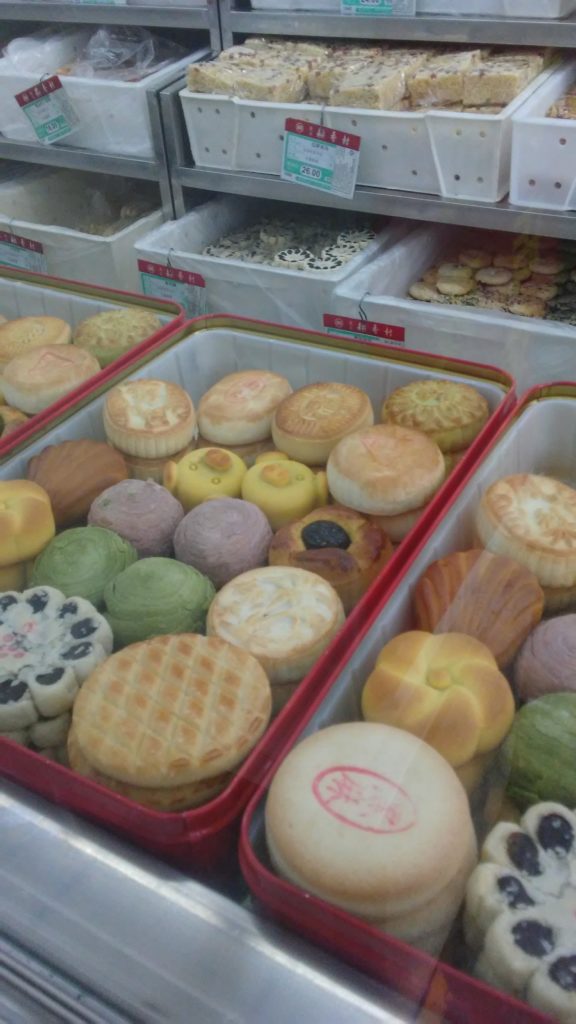
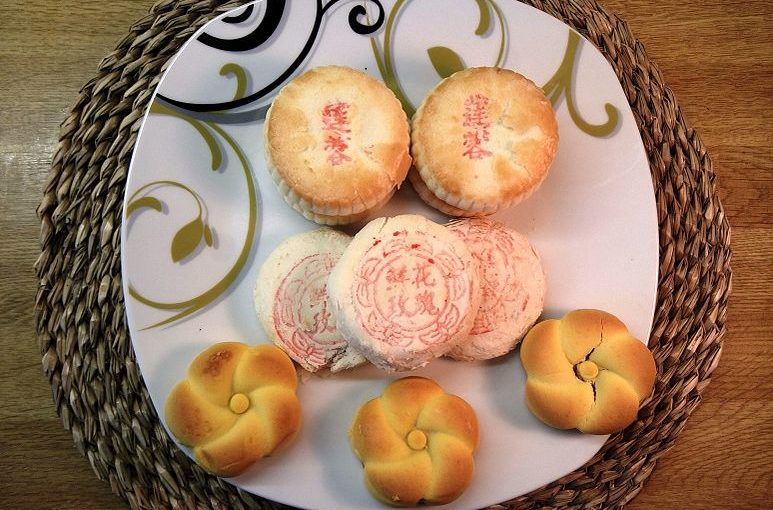
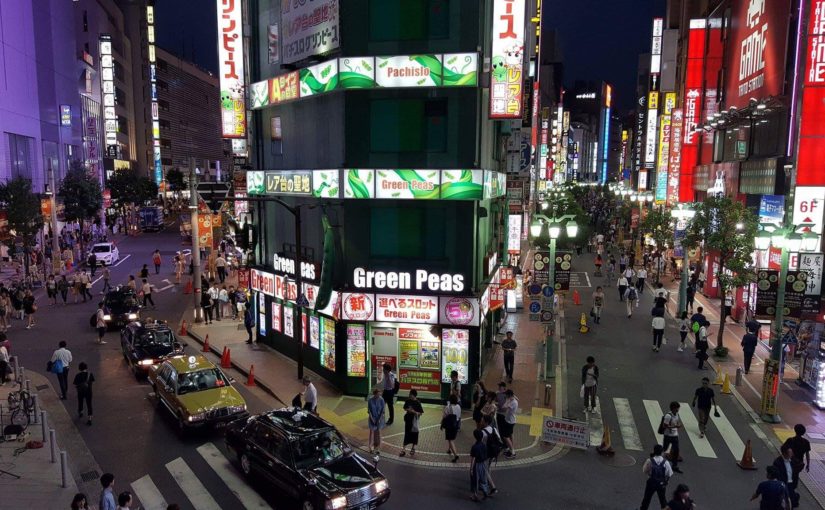


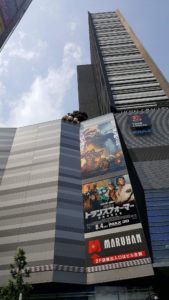
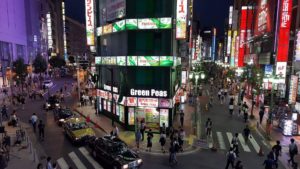
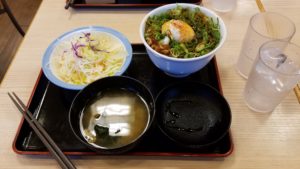
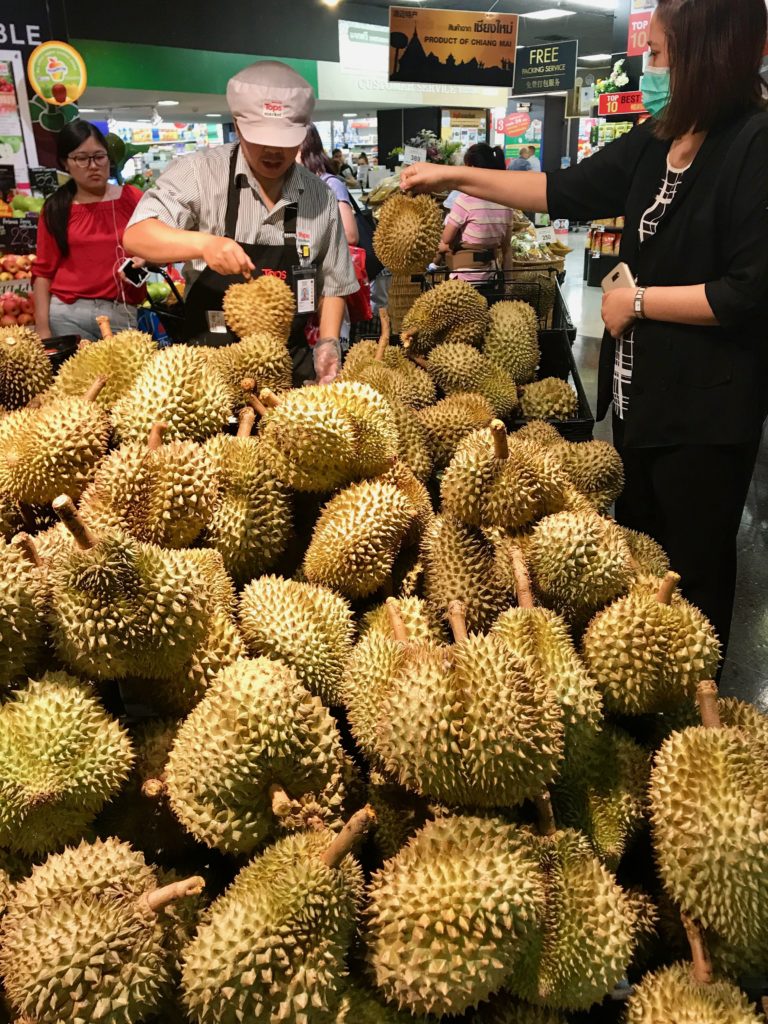 The foul-smelling King of Fruits,
The foul-smelling King of Fruits,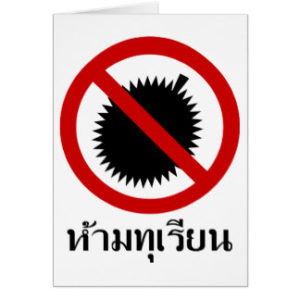 Finding the perfect (or not-so-perfect) durian can mean love or disgust for this fruit – am I am on the prowl!
Finding the perfect (or not-so-perfect) durian can mean love or disgust for this fruit – am I am on the prowl!